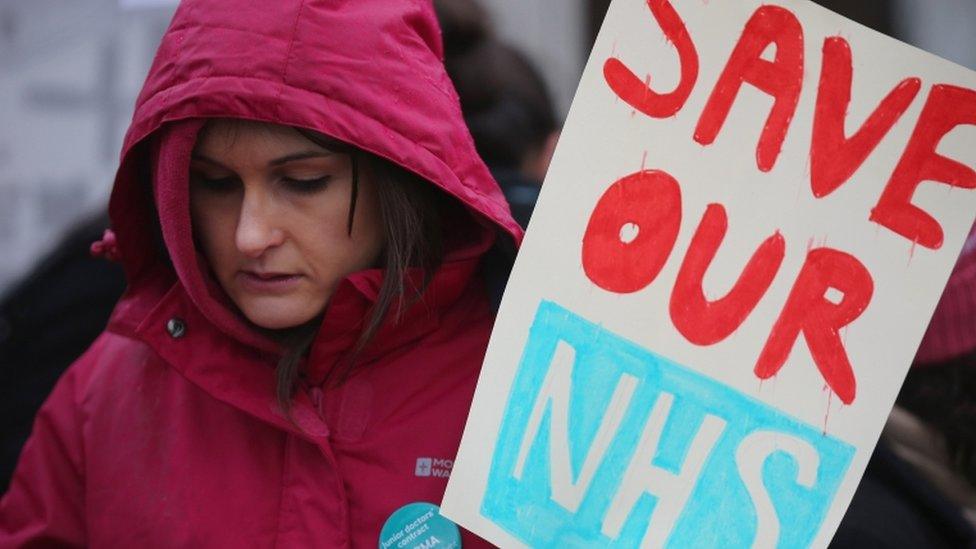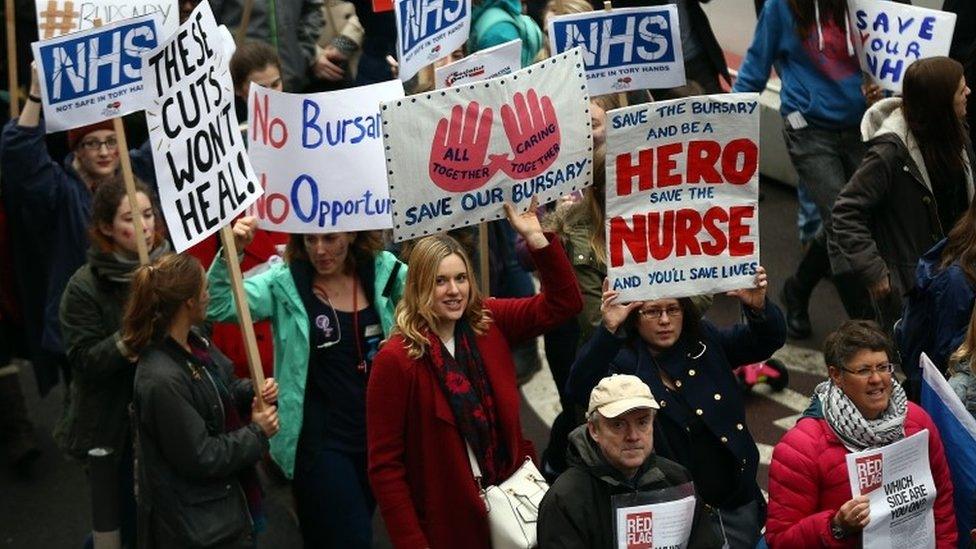Junior doctors' dispute: What next?
- Published
- comments

With the junior doctors' strike over, attention will naturally turn to what happens next.
There are two obvious answers to that question. One, the two sides will get back round the table in a bid to break the deadlock. In fact, the first talks are to take place at the conciliation service Acas on Thursday.
And, two, hospitals will start the process of rearranging all those cancelled operations.
Ultimately both tasks will prove tricky. The British Medical Association and government are, it is fair to say, still some way from reaching an agreement - the Acas talks are just focused on getting them back round the table rather than finding a solution to the deadlock.
And this is being done with the clock ticking before the next walkout - planned for 26 January - gets under way.
In the meantime, hospital managers are trying to find spaces on the operating lists for the 4,000 patients who have had their treatment postponed. This comes on top of the few thousand cancellations that were made ahead of the first strike on 1 December which ended up being called off at the last minute.
And all this, of course, comes in the middle of winter - the busiest time of year for hospitals. Suffice to say, it will be a logistical nightmare for hospitals in the coming weeks.
But sooner or later both these issues will be resolved. What is uncertain is the long-term impact of this dispute.
While the past weeks, if not months, have seen people poring over the details of the new junior doctor contract, if you step back it is clear that this row is about much more than payments for anti-social hours, career progression and limits on working hours.
It is a row that goes to the very heart of the challenge facing those who work in the NHS, those who use it and those in charge of running it. That is to say, how do we keep squeezing more from a system that it is plain to see is under so much pressure?

Key dates
This week - Conciliation service Acas is hopeful that talks between junior doctors' leaders and government can restart
26 January - Doctors to stage second strike, this time for 48 hours, but emergency cover will again be provided
10 February - All-out strike to run from 08:00 to 17:00

There are plenty of people - both in government and outside it - who think there is more the health service can give. And they may be right.
But it is also quite obvious that the tide of goodwill is running low. On the picket lines and on the wards, junior doctors have spoken almost as one, arguing the government is simply asking too much of them.

Nurse and midwives have been on the streets to protest about plans to scrap their bursaries
And it not just doctors who are angry. Last weekend thousands of nurses and midwives took to the streets of Manchester, Newcastle and London to object to government plans to take away their bursaries that cover the costs of studying.
They argue their degrees are different from other courses because they spend a lot of their time working in hospitals and in the community and do not have the opportunity to do the part-time work that many students do to help them with the cost of studying.
And this is likely to be just the start. Talks are already under way to reform the consultants contract, while many believe next on the hit list will be Agenda for Change, the contract which covers more than 1m staff from caterers and admin staff to nurses and midwives.
The NHS may be getting more money this Parliament - £8.4bn above inflation by 2020 - but that is dwarfed by the £22bn it has been told to make in "efficiency savings" in return.
Staff costs make up about half the budget. It almost goes without saying, they're the obvious target.